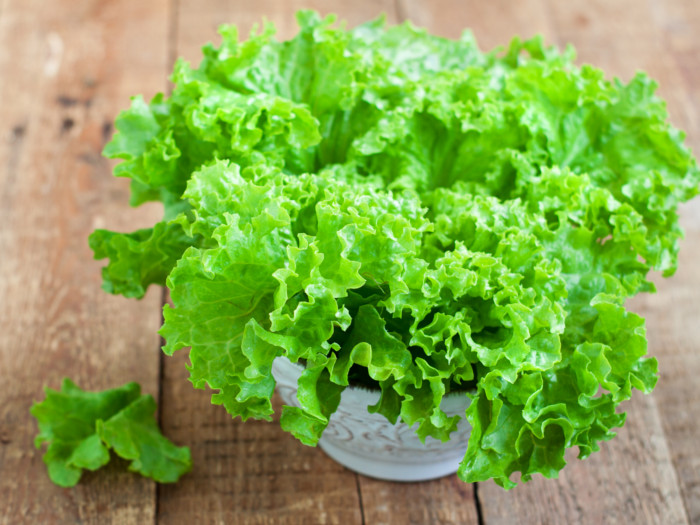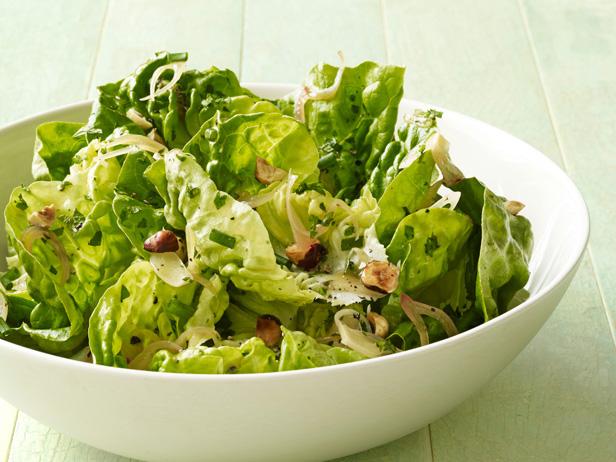When you think of superfoods, lettuce might not be the first vegetable that comes to mind. Often relegated to the role of salad filler or burger topping, this humble leafy green is actually a nutritional powerhouse in disguise. Packed with vitamins, minerals, and beneficial plant compounds, lettuce offers a host of potential health benefits that may surprise you. Let’s take a closer look at what makes lettuce such a valuable addition to a healthy diet.
The Nutritional Profile of Lettuce
Despite its lightweight reputation, lettuce is anything but lacking when it comes to nutrition. This low-calorie vegetable manages to pack an impressive array of nutrients into each crisp leaf, including:
- Vitamin A: Lettuce is an excellent source of beta-carotene, which the body converts into vitamin A. This essential nutrient supports eye health, immune function, and cell growth.
- Vitamin C: A water-soluble antioxidant, vitamin C is crucial for collagen production, iron absorption, and immune health. Certain lettuce varieties like green leaf and romaine are particularly rich in this nutrient.
- Vitamin K: Known for its role in blood clotting and bone metabolism, vitamin K is abundantly found in leafy greens like lettuce.
- Folate: This B vitamin is essential for DNA synthesis, red blood cell formation, and fetal development. Leafy greens like lettuce are a great way to boost your folate intake.
- Potassium: An electrolyte mineral, potassium helps regulate blood pressure and supports heart health. Lettuce contains a modest amount of this important nutrient.
- Fiber: While not a significant source, lettuce does provide some dietary fiber, which aids digestion, promotes feelings of fullness, and supports healthy bowel movements.
:max_bytes(150000):strip_icc()/Simply-Recipes-Fresh-Lettuce-Tip-LEAD-OPTION-02-29ef7c2c92af4c21bbd4dc00353bdab9.jpg)
Of course, the exact nutritional composition of lettuce varies depending on the specific variety. Darker greens like romaine and red leaf lettuce tend to be more nutrient-dense than lighter varieties like iceberg. That said, all types of lettuce can be a healthy addition to a varied, balanced diet.
Lettuce and Digestive Health
One of the most promising areas of research surrounding lettuce and health focuses on its potential benefits for digestive health. While more studies are needed to fully understand the mechanisms at play, early evidence suggests that lettuce may support a healthy gut in several ways.
First, the modest fiber content in lettuce can contribute to regular bowel movements and help prevent constipation. Fiber adds bulk to the stool and promotes the growth of beneficial gut bacteria, which are essential for a healthy digestive system.
Speaking of gut bacteria, some research suggests that certain compounds in lettuce may act as prebiotics, selectively feeding the “good” bacteria in the gut. A thriving community of beneficial gut microbes is linked to better digestion, nutrient absorption, and immune function.
Furthermore, the water content in lettuce can help keep things moving smoothly through the digestive tract. Staying hydrated is essential for preventing constipation and maintaining optimal digestive function.
If you have a sensitive stomach, you may find that certain types of lettuce are easier to digest than others. Butterhead lettuce varieties like Bibb and Boston, for example, are typically more delicate and easier on the digestive system than crunchy, fibrous types like romaine or iceberg.
As with any food, it’s important to listen to your body and pay attention to how you feel after eating lettuce. If you notice persistent digestive discomfort, it’s always a good idea to talk to your healthcare provider to rule out any underlying issues.
Lettuce and Blood Sugar Control
For those managing diabetes or prediabetes, the glycemic impact of foods is an important consideration. The glycemic index (GI) is a measure of how quickly a food raises blood sugar levels, with higher GI foods causing more rapid spikes.
The good news for lettuce lovers is that this leafy green ranks very low on the glycemic index. This means that it has a minimal impact on blood sugar levels and can be enjoyed freely as part of a diabetes-friendly diet.
In fact, non-starchy vegetables like lettuce are often encouraged for those looking to manage blood sugar levels. These low-carbohydrate, low-calorie foods provide essential nutrients and fiber without the blood sugar spikes associated with higher-carb fare.
When building a diabetes-friendly salad, start with a base of leafy greens like lettuce, then add non-starchy vegetables, lean proteins, and healthy fats. Some winning combinations include:
- Romaine lettuce + grilled chicken + avocado + cherry tomatoes + olive oil and vinegar dressing
- Mixed greens + canned tuna + hard-boiled egg + cucumber + olive oil and lemon juice dressing
- Butter lettuce + baked tofu + shredded carrots + sliced almonds + ginger-soy dressing

Of course, portion sizes still matter, even with low-glycemic foods. Aim to fill half your plate with non-starchy vegetables like lettuce, a quarter with lean protein, and a quarter with complex carbohydrates like quinoa or sweet potato.
As always, if you’re managing diabetes, it’s important to work with your healthcare provider or a registered dietitian to create an individualized meal plan that meets your unique needs and goals.
Lettuce and Weight Management
Lettuce’s low calorie content and high water volume make it a smart choice for those looking to manage their weight. Eating foods with a low calorie density, meaning they provide a larger volume of food for fewer calories, can help promote feelings of fullness and satisfaction while sticking to a calorie-controlled diet.
In addition to its low calorie density, the fiber in lettuce can also support weight management by slowing digestion and promoting satiety. High-fiber diets are associated with lower body weights and less weight gain over time.
That said, the benefits of lettuce for weight loss depend largely on how it’s prepared and what it’s paired with. A salad loaded with high-calorie toppings like fried chicken, creamy dressing, and croutons can quickly offset the low-calorie benefits of the lettuce itself.
To maximize lettuce’s potential for weight control, opt for lighter preparations and pair it with other nutrient-dense, low-calorie foods. Some waistline-friendly ideas include:
- A large salad with mixed greens, colorful vegetables, grilled shrimp, and a light vinaigrette
- Lettuce wraps filled with seasoned ground turkey, brown rice, and stir-fried vegetables
- A bed of romaine topped with black beans, salsa, and a dollop of plain Greek yogurt as a healthy taco salad alternative
Remember, successful weight management is about more than just counting calories. Incorporating nutrient-rich, filling foods like lettuce into a balanced diet and regular physical activity routine can help support your weight loss goals in a healthy, sustainable way.
Getting Creative with Lettuce in the Kitchen
Lettuce’s mild flavor and versatile texture make it a blank canvas for culinary creativity. While salads may be the most obvious use for this leafy green, there are countless ways to enjoy lettuce beyond the classic garden salad. Here are a few ideas to inspire your next lettuce creation:
- Lettuce Wraps: Use large, pliable lettuce leaves like butter lettuce or romaine as a low-carb alternative to tortillas or buns. Fill them with your favorite protein, vegetables, and sauce for a fresh and healthy handheld meal.
- Grilled Romaine: Believe it or not, lettuce can benefit from a quick trip to the grill. Halve a head of romaine lengthwise, brush with olive oil, and grill until lightly charred. Top with Parmesan cheese and a squeeze of lemon for a smoky, satisfying side dish.
- Lettuce Soup: While not as common as other leafy greens in soup, lettuce can add a delicate flavor and silky texture to pureed soups. Try blending tender butter lettuce with sweet peas, mint, and a touch of cream for a springtime soup that’s as vibrant as it is delicious.
- Lettuce Pesto: Switch up your standard basil pesto by adding lettuce to the mix. Blend fresh lettuce leaves with garlic, nuts, Parmesan cheese and a glug of good olive oil for a milder take on the classic sauce.
When shopping for lettuce, look for leaves that are crisp, vibrant in color, and free from brown or wilted spots. Store unwashed lettuce in a loosely closed plastic bag in the crisper drawer of your refrigerator, where it should stay fresh for up to a week. Wash lettuce just before using by rinsing thoroughly under cold running water, then patting or spinning dry.
Beyond the Salad Bowl: Other Uses for Lettuce
Lettuce’s usefulness extends beyond the culinary realm. Here are a few surprising ways to put this leafy green to work outside of the kitchen:
- Natural Skin Soother: The anti-inflammatory properties of lettuce can help soothe irritated skin. Try applying chilled lettuce leaves to sunburned skin or bug bites for temporary relief.
- Decorative Garnish: Lettuce’s ruffled leaves and vibrant colors can add visual interest to a buffet spread or appetizer platter. Use a mix of green and red leaf lettuce for a festive pop of color.
- Garden Companion: Certain varieties of lettuce can be used as a living mulch in the garden, helping to suppress weeds and retain soil moisture. Plant lettuce around taller crops like tomatoes or eggplant for a lush and edible ground cover.

Credit – Food Network
The Bottom Line on Lettuce and Health
Lettuce may be a humble vegetable, but its potential health benefits are anything but ordinary. This nutrient-packed leafy green offers a low-calorie way to boost your intake of essential vitamins, minerals, and beneficial plant compounds, all while supporting digestive health, blood sugar control, and weight management.
To get the most out of lettuce, make it a regular part of a varied, balanced diet that includes a rainbow of fruits and vegetables, whole grains, lean proteins, and healthy fats. Don’t be afraid to get creative with your preparations, and remember that even small changes like swapping out a high-carb wrap for a lettuce leaf can add up over time.
As with any food, it’s important to listen to your body and eat in a way that makes you feel your best. If you have a specific health concern or are following a particular dietary plan, it’s always a good idea to talk to your healthcare provider or a registered dietitian for personalized guidance.
In the end, lettuce may not be a magic bullet for perfect health, but it certainly deserves a place at the table. So go ahead and pile your plate high with this leafy green goodness – your body will thank you.




